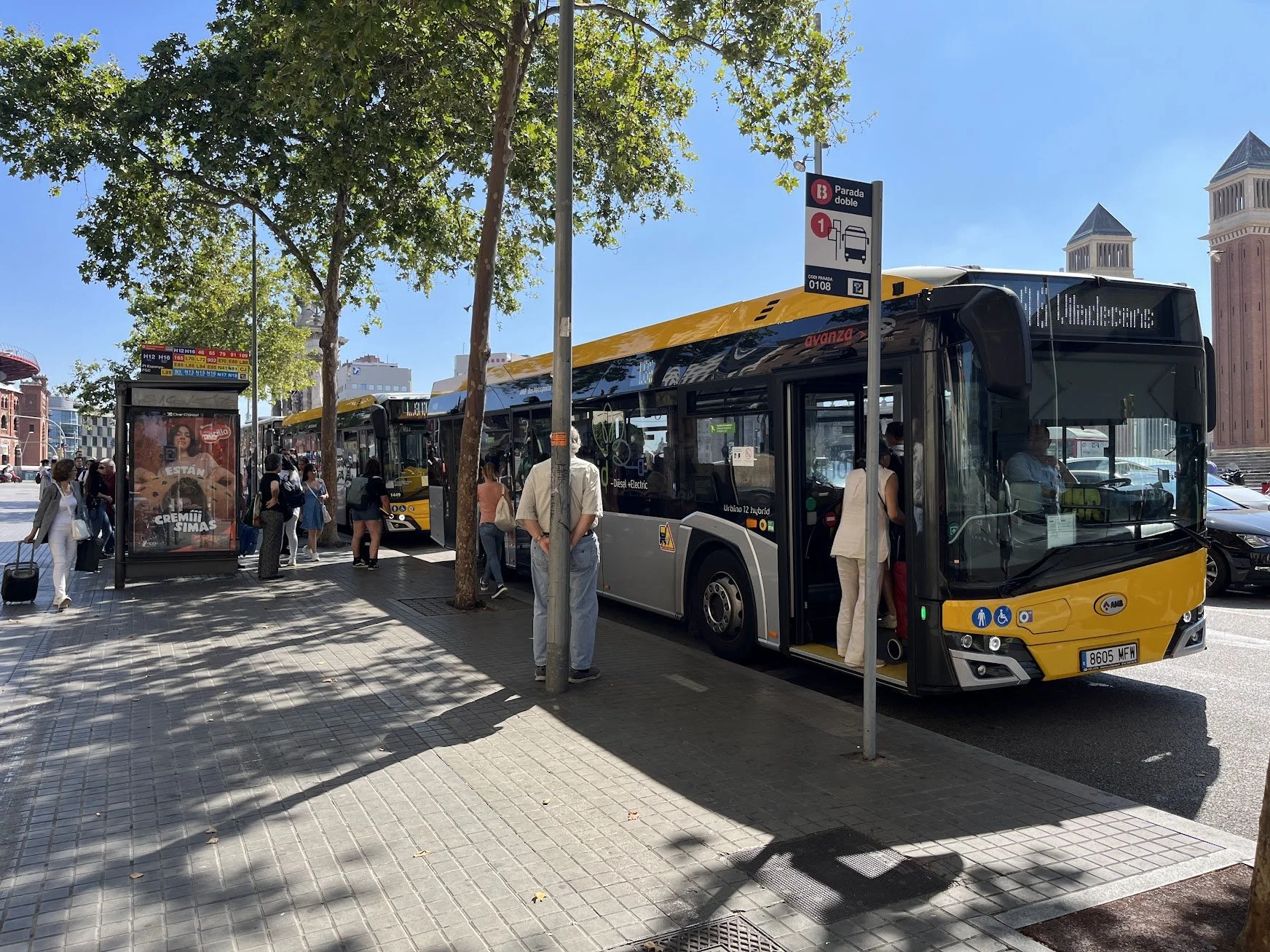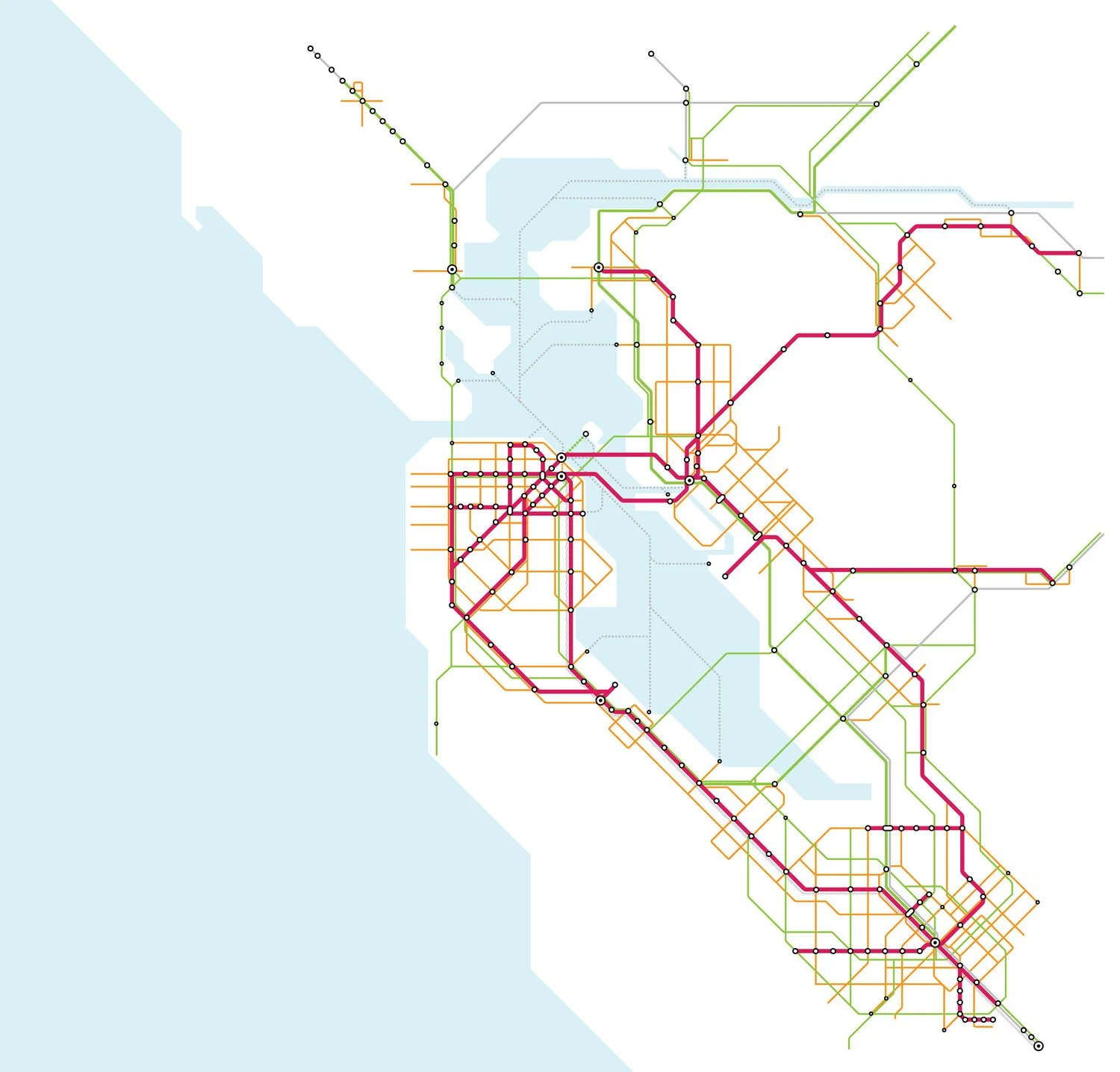What a year it has been. As we enter the last days of 2023, here’s a #wrap of some of the key numbers showing Seamless Bay Area’s major accomplishments this year.
Read MoreOn December 8, the MTC’s Regional Network Management Committee reviewed a two year status update for the Transformation Action Plan. The update covers welcome results for riders, as well as behind the scenes progress being made. The update summarizes progress on fare integration, mapping and wayfinding pilots, connected network planning, the groundwork for a regional funding measure and more.
Read MoreSouth Bay Transit leaders who participated in a recent study delegation to Switzerland believe that integrating schedules and fares, in addition to providing significantly more frequent service, should be key priorities for growing Bay Area transit ridership. Leaders discussed these and other ideas during a panel discussion that was part of Seamless Bay Area’s November 16th event, Transforming Transit: A Swiss-style rider-focused public transit system in the South Bay, in Downtown San Jose.
Read MoreRegionally integrated fares, service planning, and customer experience are practically universal attributes of public transit systems in Europe’s largest and most transit-rich metropolitan areas, and are made possible by regional Public Transport Authorities (PTAs) - or network managers - that have the legal responsibility to organize public transportation.
Read MoreBay Area transit riders will be able to pay fares with credit and debit cards by August 2024. This change will reduce barriers for first-time and infrequent users, making transit a more compelling travel option and helping regrow ridership.
Read MoreIn the next six months, MTC should analyze feasible options for transit agency consolidation - bringing key stakeholders from all transit regional agencies together to identify a unified transit agency that can best serve the Bay Area for the next generation of transit riders.
Read MoreRecent customer surveys of BART and Caltrain riders show similar patterns in trip purposes and station access. Given the similarities, the customer research and ridership growth strategies are an opportunity for increasing functional integration and efficiency. The recent surveys show that for both parts of the regional rail backbone, 61% of trips are work commute trips. About a quarter of trips using both services are for social, recreational, and other non-commute purposes.
Read MoreSweden, a country of approximately 10 million that is bigger in area than the state of California, has succeeded in significantly increasing public transit ridership over the past several decades thanks in part to strong, empowered regional institutions, called “Public Transport Authorities” (PTAs), which plan and manage coordinated public transportation networks within each of Sweden’s 19 regions.
Read MoreLast Friday, we closed out Transit Month with our annual Rider First Awards, recognizing our transit heroes of the year, announcing Ride Contest winners (and dispensing 50+ prizes), and listening to speeches from our guests for the night, including Assemblymember Phil Ting. We had a blast hosting this last Transit Month event with San Francisco Transit Riders at the Bay Area Metro Center!
Read MoreThe Seamless Bay Area blog is usually chock full of content that’s exclusively about transit. But this month (Transit Month!) we’re making an exception, and venturing into the natural world to highlight the fact that transit shouldn’t “just” be your commuting tool, or the connection to the services you need and the people you care about. Transit has the potential to connect us all to the incredible vistas and experiences of the Bay Area’s wild places, and the fascinating natural systems behind them.
Read MoreClipper BayPass - the Bay Area’s successful all-agency transit pass pilot - is taking an important step forward, expanding from the first set of institutional customers - public colleges/universities and affordable housing communities - to employers by the end of this year.
Read MoreFolks, the time we’ve all been waiting for has arrived: Transit Month! This is your quick guide for all that’s happening throughout September from our 30+ events, the Ride Contest, Nominating Transit Heros, and more.
Read MoreHelp the Bay Area develop a frequent, well-connected transit network by taking this quick, online survey. This is an official public input opportunity so your comments in support of a seamless, equitable, and fast transit network are especially important.
Read MoreKey Bay Area transit accessibility initiatives are moving forward, such as a one-seat paratransit pilot program and the creation of “mobility manager” services in each county. These actions are much needed as people with disabilities bear the brunt of our fragmented, inaccessible, and car-dependent transportation infrastructure.
Read MoreAs the Bay Area seeks to pass a transformational regional ballot measure in 2026, the lessons of Switzerland’s 1980s ‘pivot’ could not be more timely and relevant. Critically, the Swiss transit turnaround involved both raising more funding for transit and getting governance right – establishing a transportation network manager with the mandate to oversee coordination at both the national and regional scales.
Read MoreAt full implementation, VTA’s Visionary Network would offer 83% more service compared to current 2023 service, with 77% more service on weekdays and 87% more service on weekends. The service improvements are anticipated to cost 44% above the current operating budget, and to attract 45-70% more riders.
Read MoreThe San Francisco Bay Ferry, operated by WETA, has one of the highest transit ridership recoveries among services providing longer-distance regional trips. Golden Gate Ferry, WETA’s most direct counterpart, has experienced ridership recovery levels consistently between 10-25% lower than that of WETA.
Read MoreIn a bid to make transit more affordable for low-income individuals, MTC staff recommended extending the means-based fare discount Clipper START program for an additional two years till June 2025. MTC is working on ways to expand adoption of the program, which currently serves a tiny share of people who are eligible.
Read More

















